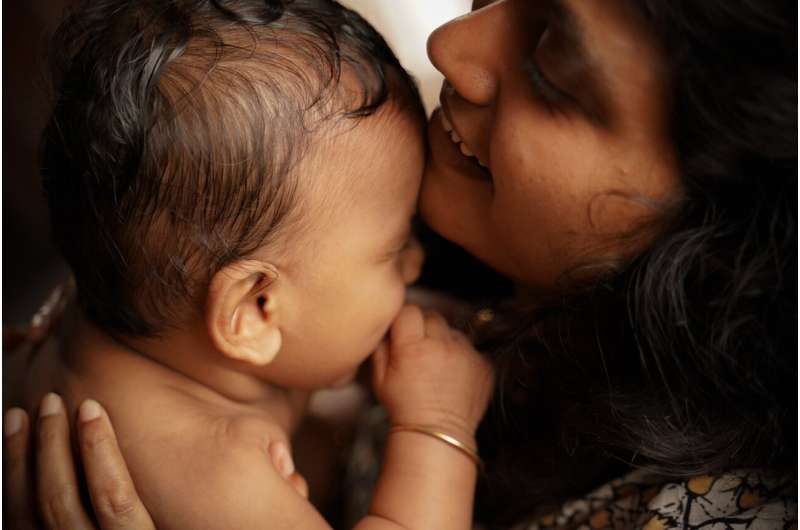This article has been reviewed according to Science X's editorial process and policies. Editors have highlighted the following attributes while ensuring the content's credibility:
fact-checked
peer-reviewed publication
trusted source
proofread
Lower risk of severe illness and death in newborns of low-income immigrant than Canadian-born females

Newborns of non-refugee immigrant females are at overall lower risk of serious illness and death than those of Canadian-born females in low-income neighborhoods in Ontario, according to new research published in CMAJ (Canadian Medical Association Journal).
Previous research has looked at the risk of adverse outcomes for newborns in low- v. high-income neighborhoods, but there is little evidence on the respective risks for immigrant and nonimmigrant mothers living in similar low-income neighborhoods. Both immigration status and living in a low-income neighborhood have been associated with poorer neonatal outcomes.
To understand the risk of severe neonatal morbidity and mortality (SNMM) in infants born to immigrants compared with nonimmigrants, researchers looked at data on all live, in-hospital births of single babies (singleton) at 20–42 weeks' gestation between 2002 and 2019 in Ontario. Ontario, Canada's largest province, receives about 53% of female immigrants entering the country.
Indicators of severe neonatal morbidity included breathing support, intravenous fluid use, early birth (before 32 weeks' gestation), very low birth weight and respiratory distress.
During the study period, there were 414 241 singleton births to 312 124 females aged 15 years and older living in low-income urban neighborhoods. Of live births, 148 050 were to immigrants and 266 191 to Canadian-born females. The risk of SNMM for newborns of immigrant females was significantly lower than for newborns of Canadian-born females (49.7 per 1000 live births compared with 65.6 per 1000 live births). However, risk varied depending on the country of origin, with a higher risk of SNMM in newborns of immigrants from Jamaica and Ghana and in those with longer residence in Ontario.
The Healthy Immigrant Effect may explain some of these differences.
"Immigrant females who are healthier and more resilient may be most capable of migration; the immigration policy of a host country may preferentially select healthy immigrants," writes Dr. Joel Ray, a physician at St. Michael's Hospital, a site of Unity Health, and scientist at ICES, with co-authors.
"Another explanation may be that some immigrants have greater net income, educational achievement and health literacy than the average for a low-income neighborhood," adds Dr. Patricia O'Campo, co-author and epidemiologist, St. Michael's Hospital and the University of Toronto, Toronto, Ontario.
The research underscores the importance of looking at trends at neighborhood levels and that there is variability within areas.
"Efforts should be aimed at improving the overall health and well-being of all females residing in low-income areas, and at determining if the risk of adverse birth outcomes can be equitably reduced among immigrant and nonimmigrant groups," concludes Jennifer Jairam, a Ph.D. candidate from the University of Toronto.
More information: Morbidity and mortality of newborns born to immigrant and nonimmigrant females residing in low-income neighbourhoods, Canadian Medical Association Journal (2023). DOI: 10.1503/cmaj.221711
















